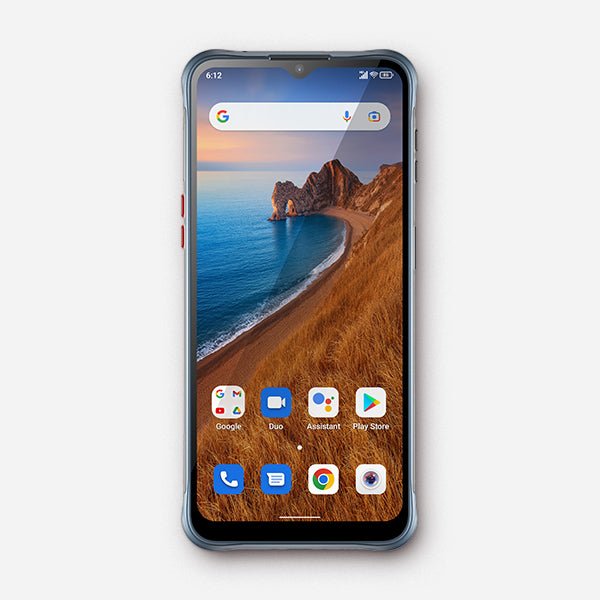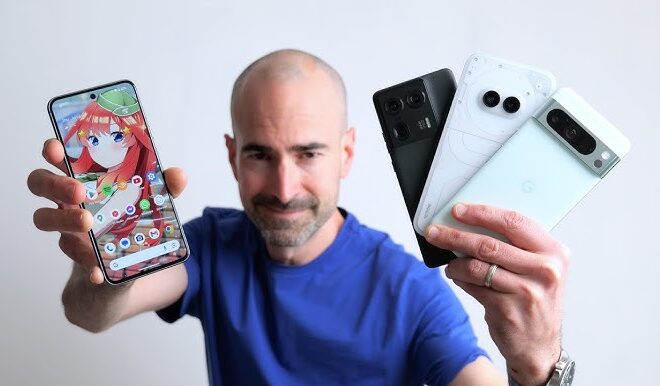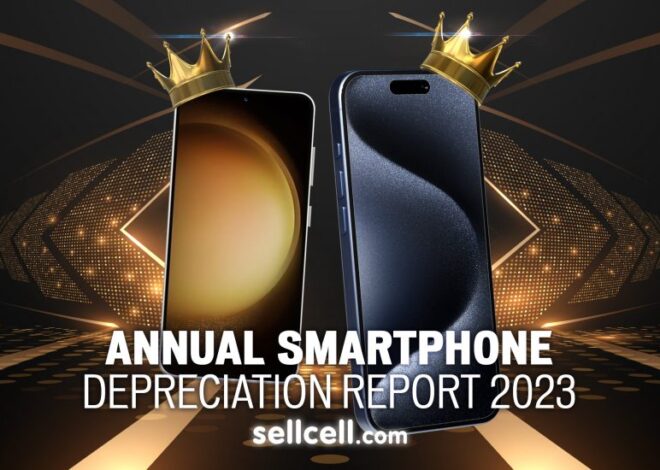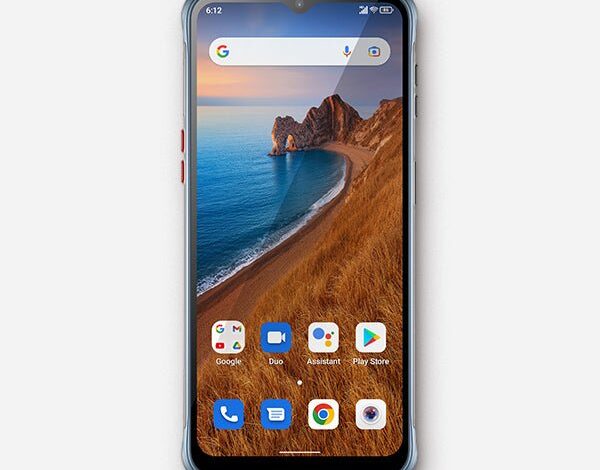
The Android Phoenix: How Legacy Brands Are Redefining the Smartphone Market
The global smartphone market often appears to be a battleground dominated by a few titans. Giants like Samsung and Google, alongside formidable Chinese manufacturers, seem to have an unshakable grip on market share and consumer mindshare. However, a closer look at the latest Android news reveals a far more dynamic and fascinating landscape. The very nature of the Android ecosystem—open, adaptable, and fiercely competitive—creates opportunities for unexpected players to emerge, or in some cases, re-emerge. Legacy brands, once thought to be relics of a bygone mobile era, are staging remarkable comebacks, challenging the status quo and enriching the world of Android phones. This resurgence is not merely a play on nostalgia; it’s a calculated strategy blending brand recognition with modern technology and targeted market positioning. This article delves into the strategies fueling this revival, explores the expanding universe of connected Android gadgets, and offers a guide for consumers navigating this ever-evolving marketplace.
The State of the Android Ecosystem: A Battlefield of Titans and Challengers
To understand how older brands can find new life, one must first appreciate the complex environment in which they operate. The Android market is a paradox: it is both heavily consolidated at the top and incredibly fragmented throughout the rest of the ecosystem. This duality is the direct result of Android’s core design philosophy.
Market Dominance and Saturation
At the premium end of the spectrum, the competition is fierce. Samsung’s Galaxy S series and Google’s Pixel line command significant attention, pushing the boundaries of mobile photography, AI integration, and display technology. In parallel, brands like Xiaomi, OPPO, and OnePlus have carved out substantial market share by offering flagship-level specifications at more competitive price points. This has led to a degree of saturation, where meaningful innovation becomes harder to achieve and brand loyalty is paramount. For a new or returning player, competing head-to-head with these established flagships is a monumental, often financially unviable, challenge. The real opportunity often lies in the mid-range and budget segments, where volume is high and consumers are often more focused on value and reliability than on cutting-edge features.
The Open-Source Advantage: Android’s Double-Edged Sword
The Android Open Source Project (AOSP) is the bedrock of the operating system’s global dominance. It provides a free, open-source foundation that any manufacturer can use to build a smartphone. This dramatically lowers the barrier to entry, allowing companies to focus on hardware design and user experience without having to develop an entire OS from scratch. This openness is precisely what enables the comeback of legacy brands. A new company can license a well-known name, leverage AOSP, and bring a product to market with relative speed.
However, this is a double-edged sword. The same openness that fosters opportunity also breeds intense competition and fragmentation. With dozens of manufacturers creating their own “forks” or skins of Android (like Samsung’s One UI or Xiaomi’s HyperOS), the user experience can vary wildly. This creates a market where standing out requires more than just good hardware; it demands a clear and compelling software strategy.
The Role of Licensing and Partnerships
The modern revival of a classic brand is rarely driven by the original company. Instead, it’s powered by a strategic licensing model. A newer, more agile company acquires the rights to use a trusted, nostalgic brand name. A prime example of this model is HMD Global (Human Mobile Devices), the Finnish company that acquired the exclusive license to produce phones under the Nokia brand. This approach provides the best of both worlds: the operational flexibility and lean structure of a startup combined with the immense brand equity and consumer trust built over decades by the original company.
The Phoenix Strategy: How Legacy Brands Rise from the Ashes
A successful brand revival is more than just putting an old logo on a new device. It involves a carefully crafted strategy that leverages the brand’s heritage while addressing the needs of today’s consumers. By deconstructing this approach, we can see a clear blueprint for success in the crowded market of Android phones.
Case Study: The Nokia Revival Blueprint
The return of Nokia-branded smartphones is a masterclass in this strategy. Instead of trying to immediately take on the iPhone or Samsung’s latest flagship, the approach was far more nuanced and targeted.
- Nostalgia and Trust: The Nokia name is synonymous with durability, reliability, and iconic design. The new devices leaned into this heritage, emphasizing robust build quality and no-nonsense functionality, qualities that resonate strongly in the budget and mid-range tiers.
- Targeting Value-Driven Segments: The initial wave of new Nokia phones focused on affordability. They offered solid performance, dependable battery life, and quality construction at price points where brand trust is a major purchasing factor. This allowed them to build a loyal user base before attempting to move into more competitive segments.
- The “Pure Android” Differentiator: In a market filled with heavily customized software and pre-installed bloatware, offering a clean, stock-like Android experience became a key selling point. By participating in the Android One program, many Nokia devices guaranteed timely OS updates and monthly security patches. This appealed to tech-savvy users and anyone frustrated with cluttered, slow software, creating a clear software identity for the brand.
Common Tactics in the Comeback Playbook
The Nokia story highlights a repeatable formula that other brands have attempted with varying degrees of success. Motorola, under Lenovo’s ownership, found success by focusing on the mid-range Moto G series, which offered a near-stock Android experience and unique “Moto Actions.” The core tactics are consistent:
- Leverage Brand Equity: Start with a name that consumers already know and trust.
- Identify an Underserved Niche: Find a gap in the market, whether it’s budget-conscious buyers, users seeking a clean software experience, or those prioritizing physical keyboards or extreme durability.
- Create a Software Identity: Differentiate with a unique software promise, be it “pure Android,” enhanced security features, or a minimalist user interface.
- Build a Graduated Portfolio: Start with a strong foothold in the budget or mid-range market and gradually expand the product line to cover more price points as the brand re-establishes itself.
More Than a Phone: The Proliferation of Android Gadgets
The modern smartphone battle is no longer just about the handset. The most successful players are building comprehensive ecosystems of interconnected devices that lock users in and provide a seamless experience across their digital lives. The world of Android gadgets is expanding rapidly, becoming a critical component of any brand’s long-term strategy.
The Ecosystem as a Competitive Moat
Companies like Samsung and Google understand that the more of their devices a consumer owns, the less likely they are to switch brands. A Samsung phone works seamlessly with a Galaxy Watch and Galaxy Buds. A Google Pixel phone integrates perfectly with a Pixel Watch and Nest Hub. This “walled garden” effect, once the primary domain of Apple, is now a key strategy in the Android world. Features like Quick Share between Samsung devices or the easy pairing of Pixel Buds with a Pixel phone create a user experience that is greater than the sum of its parts. For challenger brands, competing on the phone alone is not enough; they must also consider their strategy for companion devices.
Wearables: The Wrist-Based Command Center

The smartwatch market is a major front in the ecosystem war. Powered by Google’s Wear OS, devices like the Samsung Galaxy Watch series and the Google Pixel Watch offer deep integration with Android phones. They handle notifications, track sophisticated health metrics like ECG and blood oxygen, facilitate mobile payments, and run a growing library of third-party apps. The latest Android news is often filled with updates to Wear OS and new hardware from a variety of manufacturers, all vying for the valuable real estate on a user’s wrist.
The Smart Home and Immersive Audio
The ecosystem extends far beyond wearables into the home. Android TV and its successor, Google TV, power countless smart televisions and streaming devices, offering a unified interface for all your content. Smart speakers and displays, like the Google Nest series, act as central hubs for controlling smart home devices and accessing the Google Assistant. Furthermore, the wireless audio space is booming. True wireless earbuds like the Pixel Buds Pro or Samsung’s Galaxy Buds offer features like active noise cancellation and spatial audio, but their most compelling feature is their deep, seamless integration with their parent company’s phones. These connected Android gadgets are no longer accessories; they are essential components of the modern Android experience.
Making the Right Choice: Tips for Today’s Android Buyer
With a market flooded with choices from global titans, nimble challengers, and resurrected legends, picking the right Android phone can be daunting. Here are some practical tips and best practices to help you make an informed decision.
Look Beyond the Spec Sheet

It’s easy to get caught up in a numbers game: more megapixels, more RAM, a higher clock speed. While these specifications are important, they don’t paint the full picture. A common pitfall is choosing a phone with a 108-megapixel camera that produces mediocre photos due to poor software processing. Instead, focus on the overall user experience.
- Software Experience: Do you prefer the clean, minimalist interface of stock Android (found on Pixel and many Nokia phones) or the feature-rich, customizable skins from Samsung or Xiaomi?
- Build Quality: How does the phone feel in your hand? Does it feel durable and well-made? A brand’s reputation for quality can often be a reliable indicator.
- Camera Quality: Don’t just look at megapixel counts. Read reviews and look at sample photos to judge real-world performance, including color science, low-light capabilities, and video stabilization.
Understand Software and Update Commitments
One of the most critical, yet often overlooked, aspects of buying an Android phone is the manufacturer’s commitment to software updates. These updates provide not only new features but also crucial security patches that protect your data. Google and Samsung are currently leading the industry, promising up to seven years of OS and security updates for their flagship devices. For mid-range and budget phones, this commitment can vary significantly. Before buying, research the manufacturer’s official update policy for that specific model. A phone that receives consistent updates will last longer and provide a safer, more stable experience over its lifetime.
Consider Your Ecosystem
Think about the other tech you own or plan to buy. If you’re already invested in the Samsung ecosystem with a Galaxy Watch and a Samsung TV, a new Samsung phone will offer the most seamless integration. If you’re a heavy user of Google services and are considering a Pixel Watch, a Google Pixel phone is a natural choice. While most Android gadgets will work with most Android phones, the tightest integration and best user experience often come from staying within a single brand’s ecosystem.
Conclusion: A More Vibrant Market for All
The Android landscape is a testament to the power of competition and openness. While market leaders continue to innovate at a blistering pace, the resurgence of legacy brands proves that there is ample room for players who offer a compelling alternative. By leveraging brand trust, targeting specific consumer needs, and delivering on a clear software promise, these “phoenix” brands are not just surviving—they are thriving. For consumers, this dynamic is an unequivocal win. It fosters greater choice, pushes all manufacturers to improve, and ensures that whether you’re looking for a cutting-edge flagship, a reliable mid-ranger, or a whole ecosystem of connected Android gadgets, there is a device perfectly suited to your needs and budget. The constant evolution and unexpected turns make following Android news more exciting than ever.



